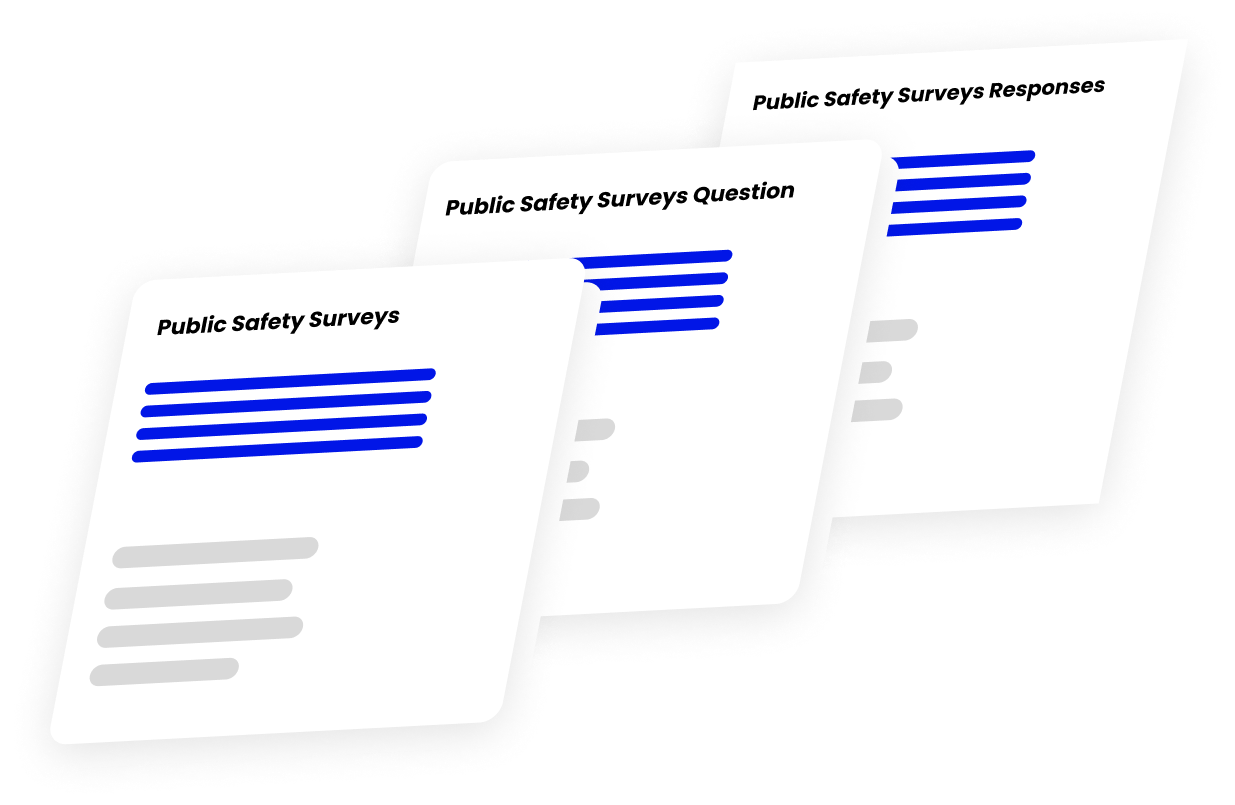Public Safety Surveys
What Is A Public Safety Survey?
Why Should It Be Done?

Here are several reasons why police departments should conduct Public Safety Surveys:
- To ensure that a community is a safe and enjoyable place to live, work, and play.
- To identify areas of concern and possible solutions to improve public safety.
- To help develop and maintain an effective public safety plan for a community.
- To identify the training and equipment needs of public safety personnel.
- To assess the effectiveness of current public safety measures.
- To gauge public opinion on a variety of public safety topics.
- To provide input on the development of new public safety initiatives.
- To help assess the impact of new laws and ordinances on public safety.
- To gauge the success of public safety campaigns.
- To provide feedback on the level of service provided by public safety personnel.
- To identify potential new partnerships to improve public safety.
- To help assess the financial impact of public safety measures.
- To provide input on the development of emergency preparedness plans.
- To help assess the neighborhood watch program.
- To provide feedback on the community's response to public safety emergencies.
- To identify unmet public safety needs in the community.
- To help prioritize public safety spending.
- To provide input on the development of public safety policies.
- To help evaluate the effectiveness of public safety programs.
- To provide input on the implementation of new public safety technologies.
- To help assess the impact of public safety measures on vulnerable populations.
- To provide feedback on the accessibility of public safety services.
- To help assess the community's preparedness for public safety emergencies.
- To provide input on the community's response to public safety incidents.
- To help identify areas for improvement in the public safety system.
Benefits Of A Public Safety Survey
Public safety surveys are an effective way to assess public opinions, gather data, and develop solutions that improve the overall safety of your community. It can help identify areas of concern, pinpoint problems and potential solutions, and gauge the effectiveness of current safety measures.

Some of the key benefits of a Public Safety Survey include:
Identifying areas of public concern:
A Public Safety Survey can help identify the areas of safety that are most important to the public. This information can be used to focus safety planning and resources on the areas of greatest need.
Pinpointing problems and potential solutions:
A Public Safety Survey can help identify problems and potential solutions to safety issues. This information can be used to develop and implement targeted safety interventions.
Gauging the effectiveness of current safety measures:
A Public Safety Survey can help assess the effectiveness of current safety measures. This information can be used to improve the effectiveness of safety interventions and make sure resources are being used effectively.
Building support for new safety initiatives:
A Public Safety Survey can help build public support for new safety initiatives. This information can be used to promote and implement new safety measures.
Increasing public engagement in safety planning:
A Public Safety Survey can help increase public engagement in safety planning. This information can be used to involve the public in safety planning and decision-making.
